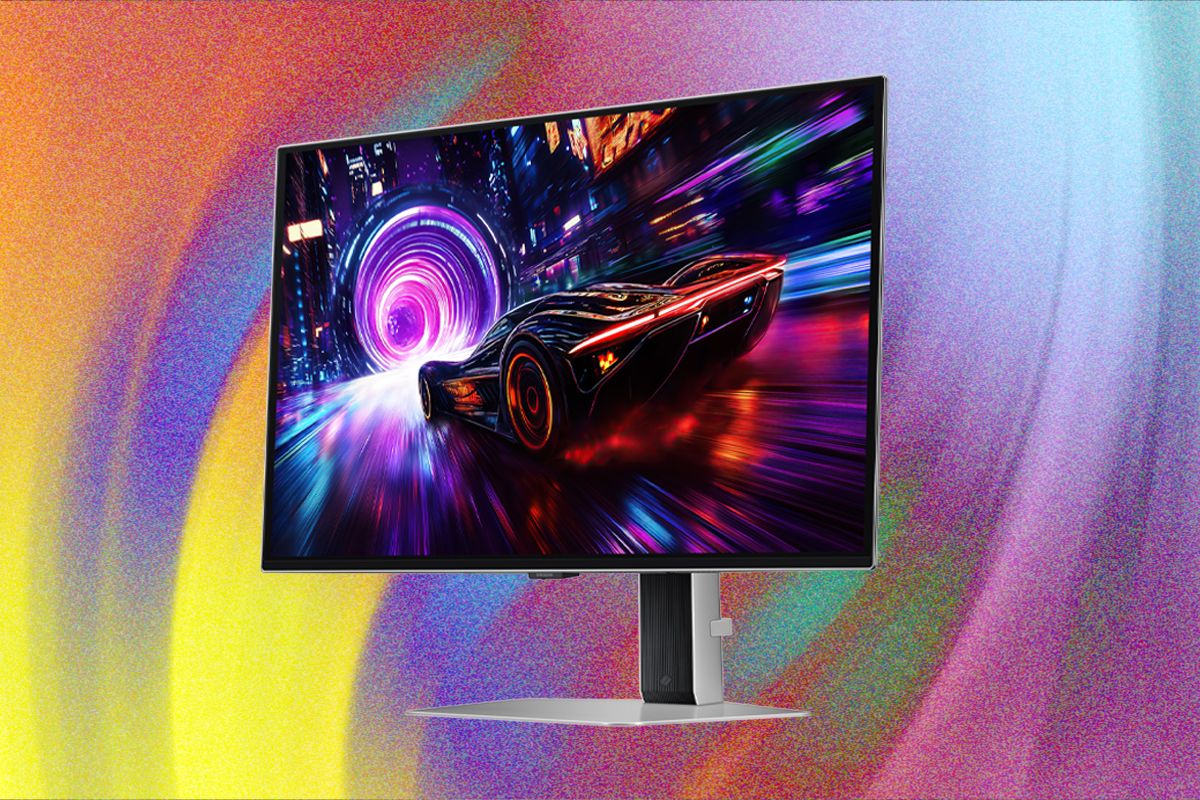All products featured on WIRED are independently selected by our editors. However, we may receive compensation from retailers and/or from purchases of products through these links.
Explosions look sicker on a gaming monitor. So do touchdowns, boss fights, and chicken dinners—it’s just science. That’s because gaming monitors have special features you won’t find on your everyday monitor, and I don’t just mean RGB lighting. They have higher refresh rates, faster response times, advanced panel types, and admittedly, they often feature colorful LEDs.
So if you just finished putting together that new gaming PC, and you’re looking for a monitor to plug into, I’ll walk you through my favorite pickd for every type of gamer, from the first-person shooter to the third-person farmer. Our current favorite, the AOC Q27G4ZD, is a great affordable 1440p option with a high refresh rate, but you can upgrade to Samsung’s G8S1F if you want the perfect black levels that come with a QD-OLED panel. Also, be sure to check out our guides to the Best Gaming Keyboards, Best Gaming Mice, Best Gaming Headsets, and Best Game Controllers.
General Buying Tips
Panel type tends to be a lot more important on gaming panels than it is for monitors you’re just using for emails and social media. This choice will determine your image quality, color and black level brightness, refresh rate, and latency. We have a great explainer if you want to know more about the technical details and differences between all of the options.
Quantum-Dot OLED is one of the latest and most premium panel technologies, delivering more vivid colors while still taking advantage of the deep blacks that you get from OLED. The important bit here is that these panels are perfect for gaming. Games are well equipped to take advantage of the deep black levels and brighter colors without any extra help. Most of the screens on our list have QD-OLED panels for this reason, and I’d recommend prioritizing the panel type, unless you have a limited budget.
Where typical monitors run at a fixed refresh rate, most modern gaming monitors include some form of adaptive refresh technology. By syncing up the refresh rate of your screen with the game’s current frame rate, you can reduce the tearing and visual weirdness caused by a mismatch.
Adaptive refresh comes into two flavors. FreeSync is the more common offering, particularly on nongaming and budget-friendly screens, and it should work with both Nvidia and AMD GPUs. Screens that have Nvidia’s G-Sync may not support your AMD GPU, so you’ll need to check this spreadsheet for compatibility.
While televisions may generally be limited to 16:9 screens, computer monitors have the freedom to expand or contract to whatever aspect ratio they like. Ultrawide screens running at 21:9 have become a common alternative, often in a 34-inch size with a 3,440 x 1,440 aspect ratio. There are even ultra-ultrawide panels that run two 1080p or 1440p panels side by side in the same screen.
These ultrawide screens aren’t better or worse than 16:9 panels, and they often have feature sets similar to their classically shaped siblings’. Instead, you should consider your desk space, and the sorts of games you typically play. I find ultrawide panels are great for cinematic games, where the extra screen space filling your peripheral vision can make them feel more immersive. They’re less optimal for fast-paced shooters and twitchy games, where you need to be able to spot all the information on your screen at once without moving your head or eyes.
-
Best Monitor for Most
My personal daily driver is the AOC Q27G4ZD (8/10, WIRED Review). A 1440p screen is a very manageable resolution for modern systems, and a great target for a new build. This AOC is a premium version, with the latest panel tech, at a very reasonable price. It quickly took the place of a less impressive 4K screen, which I think is a testament to how much of an improvement QD-OLED is over most other panel types.
It has a 240-Hz refresh rate, which is among the highest you’ll find on gaming screens, with only a few options at 300 Hz or higher. According to the Steam Hardware Survey, just over half of gamers still play at 1080p. The upgrade to 1440p, plus the refresh improvement, should feel massive to anyone looking at a 90-Hz or even 120-Hz screen.
I only have two complaints about the AOC, and one is relatively minor. The glossy finish is fine for pure gaming, but it might be a little bothersome if you intend to use the monitor for both work and play, especially if it’s in a brightly lit office. The less bothersome issue is the stand, which feels a little light for how heavy the screen is, but I recommend using a monitor arm anyway for better adjustability.
Specs Panel Type QD-OLED Resolution 2,560 x 1,440 Refresh Rate 240 Hz -
Best 4K Gaming Monitor
Samsung
Odyssey OLED G81SF 4K 240Hz Gaming Monitor
As one of Samsung’s most premium offerings, the G8S1F is a seriously beefy gaming monitor, but it comes at a cost, with both price and performance demands. If you already have a powerful system and deep pockets, this is the monitor to get. It has a massive 240-HZ refresh rate, a Quantum Dot OLED panel for beautifully vivid colors and perfect black levels, and FreeSync Premium Pro to make sure every game runs smoothly.
The caveat is that I don’t think most gamers can comfortably power a screen like this. Room to grow is great, but if the gap is too big, you might be frustrated to not get anywhere close to 240 frames per second (fps) at 4K. It’s also over $1,000, and with awesome 1440p screens available for half that price, you might consider putting that extra cash towards a better GPU.
Specs Panel Type QD-OLED Resolution 3,840 x 2,160 Refresh Rate 240 Hz



